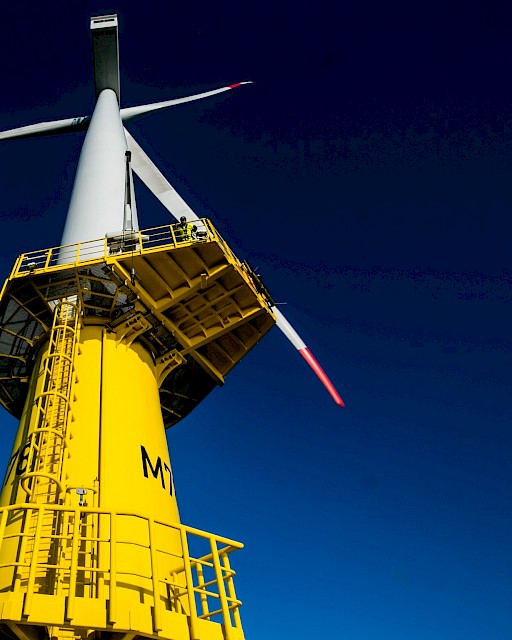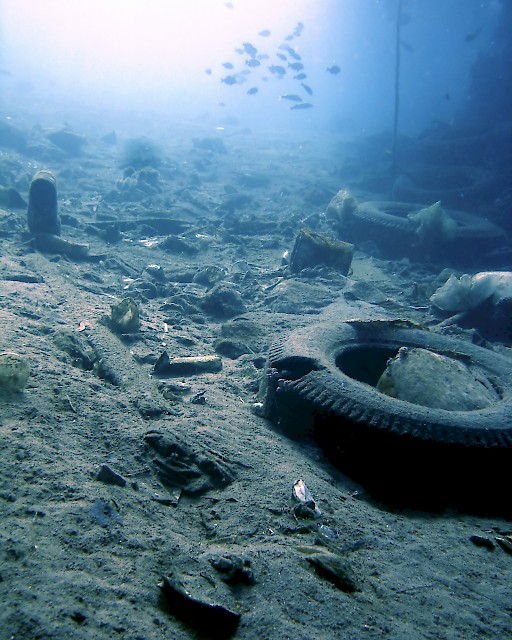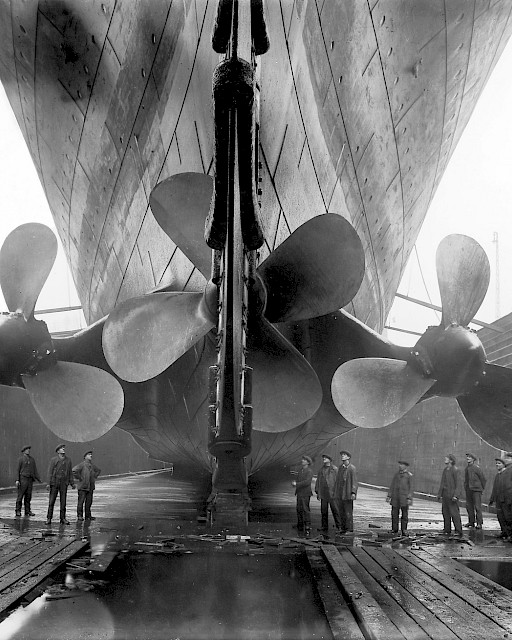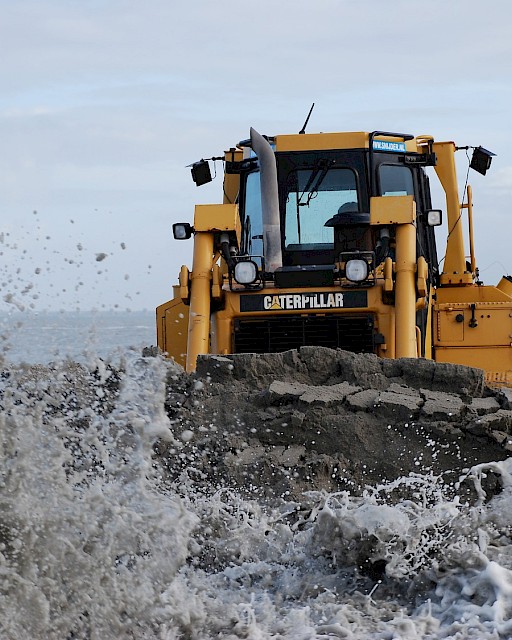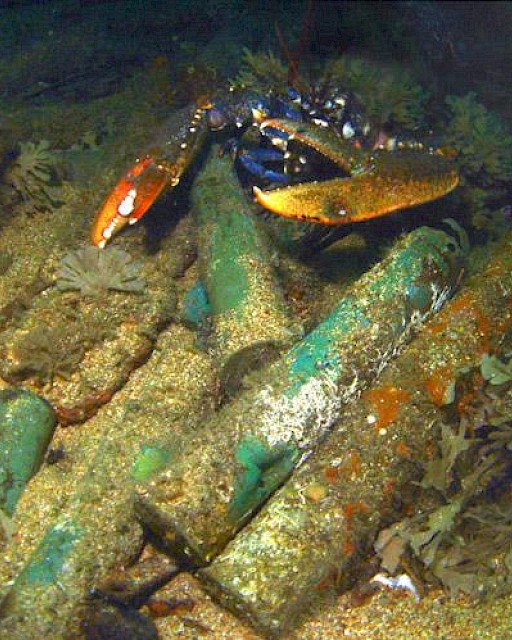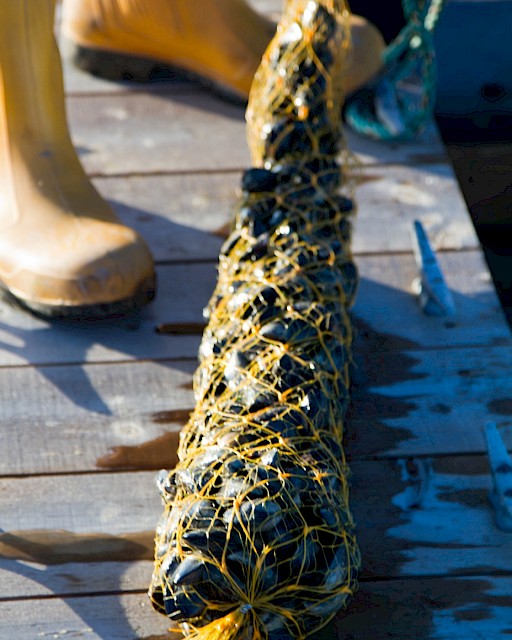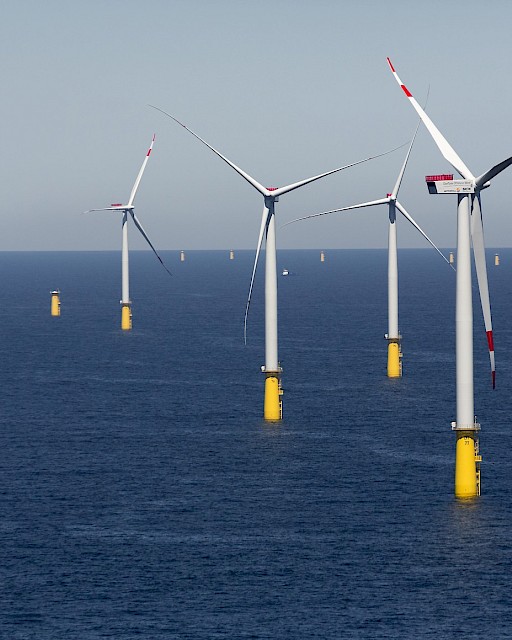Underwater Noise
Marine mammals, many fish species and even some invertebrates communicate using sound to find mates, to search for prey, to avoid predators and hazards, and for navigation.
Many of the human activities that take place in the OSPAR Maritime Area generate sound and contribute to the general background level of noise in the sea. Anthropogenic sound sources are categorised as impulsive or continuous (ambient). Impulsive sound sources include percussive pile driving for inshore and offshore construction (e.g. windfarms) seismic surveys (using airguns) to inspect subsea oil and gas deposits, explosions, and some sonar sources. Continuous sound sources are mainly from shipping. Sound is referred to as ‘noise’ only when it has the potential to cause negative impacts on marine life.
Our latest assessments: Quality Status Report 2023
Briefing note on the thematic assessment
Distribution of Reported Impulsive Sounds in the Sea: Reported impulsive noise activity increased overall during the assessment period (2015-2019), with most reported activity occurring in the North Sea. Seismic airgun surveys were the dominant sound source. Since data are unavailable for some countries and sound sources, these results represent an under-estimation of activity in the OSPAR Area.
Risk of Impact from Anthropogenic Impulsive Sound: Estimated risk of disturbance to harbour porpoise from reported anthropogenic impulsive sound decreased by 48% from 2015 to 2017, then increased 31% from 2017 to 2019. Exposure of harbour porpoise to anthropogenic impulsive sound was typically greatest during August-October. More comprehensive reporting will improve confidence in the assessment.
Pilot Assessment of Ambient Noise: Shipping noise is dominant in the underwater soundscape of the North Sea. In the southern part and along the major shipping routes the noise exceeds the natural sound by more than 20 dB for more than 50% of the time. Marine protected areas (MPAs) don’t seem to give additional protection against continuous noise.
Underwater sound from anthropogenic sources has the potential to mask biological signals and to cause behavioural reactions, physiological effects, injuries and mortality in marine animals.
 Levels and frequencies of anthropogenic and naturally occurring sound sources in the marine environment. Specturum Noise Level ("Acoustic intensity per Hertz") versus Frequency (measured in Hertz or "cycles per second").
Levels and frequencies of anthropogenic and naturally occurring sound sources in the marine environment. Specturum Noise Level ("Acoustic intensity per Hertz") versus Frequency (measured in Hertz or "cycles per second").
Impacts depend on both the nature of the sound and the acoustic sensitivity of the organism. There are difficulties in quantifying the extent and scale of the impacts, as there is great variability in the characteristics of the sounds, the sensitivities of different species and the scale of noise-generating activities. Ambient or background noise is not range-dependent and remains constant irrespective of location. The perception of localised noise sources reduces with increasing distance from each source, eventually becoming indistinguishable from ambient noise.
Monitoring and Assessment
Impulsive Noise
OSPAR undertook its first regional assessment of the pressure from impulsive noise in 2017 as part of the Intermediate Assessment of the state of the North-East Atlantic. That assessment was updated in 2019, allowing for a first multi-year assessment. Impulsive noises are generally regulated through national marine licencing therefore an Impulsive Noise Registry was developed to hold the information and produce a regional assessment based on pulse block days . An impulsive noise risk of impact indicator is currently under development, which will assess the impact of that pressure on specific indicator species.
IA2017 Distribution of Reported Impulsive Sounds - Total Pulse Block Days:
Data available here: https://odims.ospar.org/maps/550/view
Ambient Noise
OSPAR adopted an Ambient Noise Monitoring Strategy in 2015. The approach for monitoring of underwater sound uses sound maps, generated from a combination of models and measurements. Models should be used to place measurement equipment, and to extrapolate from measurements to generate estimates for entire region.
The monitoring should be undertaken at an acoustic basin scale therefore the North Sea has been chosen as a pilot region to start monitoring.
The EU-funded JOMOPANS project is developing a framework for a fully operational joint monitoring programme for ambient noise in the North Sea. It will provide the tools necessary for managers, planners and other stakeholders to incorporate the effects of ambient noise in their assessment of the environmental status of the North Sea, and to evaluate measures to improve the environment.

